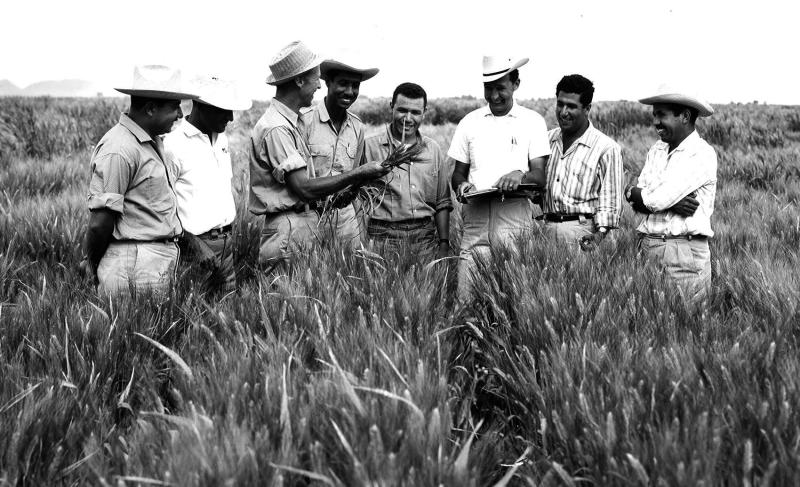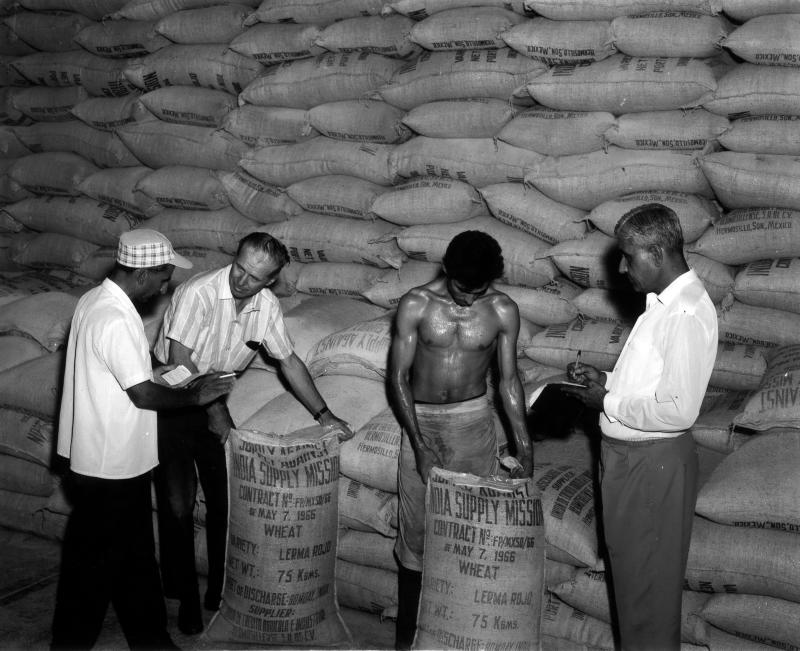
Norman Borlaug in the field teaching a group of young trainees.
(ACSESS DL)
The development of the Green Revolution left producers and consumers with positive effects. The improved wheat was shorter and built with a stronger stalk. This meant that it was less likely to fall over so more of the plant could be harvested. The plant was also able to resist diseases like wheat rust and could handle heavy amounts of fertilizer. Wheat rust is a fungal disease that can decrease ultimate crop yield to up to 20%. Norman Borluags wheat was able to grow rapidly. In addition to producing larger quantities of food, the revolution was also beneficial because it allowed for more crops to grow on roughly the same amount of land with a similar amount of effort. This allowed for a lower production cost and also resulted in cheaper prices for food in the market. In these aspects, the Green Revolution left both producers and consumers with positive effects.

Norman Borlaug in the field teaching a group of young trainees.
(ACSESS DL)
The Green Revolution was able to break a barrier in the mid 1900's by providing a source of food for unsustainable countries. In this case, the barrier was the lack of food produced in underdeveloped countries. The barrier is broken when Borlaug was able to develop a successful wheat variation that could resist pesticides and was able to grow quickly. It was proven to be a successful development when Mexico became self-sufficient in 1956 and even more so when Mexico was able to export wheat in 1963. And lastly its legacy was able to continue when countries outside of Mexico, like India were able to benefit as well.
The Green Revolution was an impactful movement but oftentimes goes unknown. The main influencer, Norman Borlaug, was able to develop the Semi-dwarf wheat which saved millions from starvation. Without the invention of the wheat millions would have died all over the globe. Today, people can be thankful for the invention that saved millions.

Norman Borlaug examines a shipment of wheat seed to India from Mexico.
(ACSESS DL)